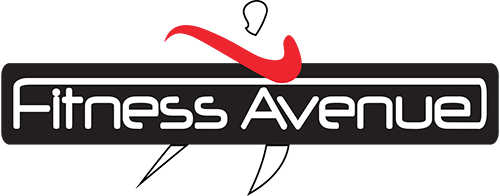People often think that exercise balls are something new in the workout world, but they have actually been around for centuries. In fact, medicine balls were used as early as the 18th century. Nowadays, people use exercise balls for everything from weightlifting to core building. There are many different kinds of balls that each serve a different purpose. This guide will let you know what these exercise balls are, how they typically get used, and what you should look for when making a purchase.
All About Medicine Balls
One of the oldest training tools in modern exercise, the medicine ball is a solid sphere that weighs between 0.5 and 25 kilograms. Medicine balls can range in size from something about the size of a softball to something as large as a beach ball. They are extremely dense, usually made from nylon, vinyl, or dense rubber. The cores of these balls are usually filled with sand or gel, but sometimes are inflated with air instead. People use medicine balls for throwing and catching drills, weightlifting, and core exercises. Unlike bar weights, the medicine ball allows you to lift weight at a faster, more natural pace because you can throw the ball rather than having to decelerate your lift. Finally, the dense weight of medicine balls gives them great utility for rolling and balancing exercises.
Perhaps the most difficult exercise that people do with this equipment is known as a wall ball. This involves facing a wall while holding the medicine ball at chest level. You then descend into a full squat, stand up as quickly as possible, and throw the ball against the wall. Ideally, you should reach a height of almost three meters. After the ball bounces off the wall, you need to catch it and repeat the exercise. Wall balls are extremely taxing but also excellent for functional fitness. They also work out a full 11 muscles in your body, making them one of the most complete full-body exercises that you can do. Just make sure that you choose a medicine ball that isn’t too heavy for you to catch as your body starts to wear down from the repetition.
If you plan to buy a medicine ball, the most important thing to do is consider what sort of exercises you plan to do with it. If you only expect to use the ball for lifting and throwing, then you don’t have to worry as much about its quality and durability. In these cases, you should just make sure that the ball is heavy enough to provide resistance but light enough that a misstep in lifting won’t hurt you. If you plan to slam the medicine ball on the ground or against walls, you need something more durable. In this case, rubber is not the best choice of material, as it degrades faster than vinyl or nylon. High-end medicine balls now use ballistic-grade materials, which provides immense protection and should last through many years of vigorous use.
All About Stability Balls
Also known as Swiss balls, stability balls have become cornerstones in the workout world thanks to their use in popular exercises such as yoga. Stability balls are usually made out of durable rubber and are inflatable, ranging in size from something you can fit between your ankles to about the size of a standard chair. These balls usually see use in core exercises and balance routines, although they also get used quite often for stretching. You can balance your legs or torso on a stability ball while doing pushups and similar exercises. They are also ideal for back and leg stretches. Because stability balls are so durable, many people now use them as office seating, providing themselves with some minor balance and core exercises during an otherwise inactive workday.
When you buy a stability ball, your primary consideration should be the ball’s diameter in relation to your height. If you stand under 1.6 meters call, a 45-centimeter diameter ball is probably right for you. Somebody who ranges from 1.6 to 1.7 meters tall should opt for a 55-centimeter ball. Somebody who is between 1.7 and 1.8 meters tall should choose a 65-centimeter ball. If you are taller than 1.8 meters, consider a 75-centimeter ball. In almost all cases, it is better to go larger when in doubt. If you are right on the cusp of the size ranges mentioned above, choose the next size range up to give your exercise ball more versatility.
Aside from size, the next biggest concern is durability. It’s best to buy stability balls new, since the rubber does degrade over time. A ball that has seen even a few years of use might start showing signs of wear shortly after you purchase it, meaning that you will need to patch or replace it quickly. Next, consider how often you need to inflate the ball. Most stability balls come with a hand pump that allows you to inflate the ball at home. If you plan to do a lot of inflating and deflating, you might want to seek out an electric pump as an accessory.
All About Slam Balls
Slam balls are essentially larger-sized versions of medicine balls and are used in much the same way. Larger in diameter and slightly heavier, they are made from the same combination of nylon, vinyl, or rubber as medicine balls, and also typically have sand, gel, or air in their cores. Slam balls get their name from the most common exercise they are associated with, in which a person lifts the ball over their head and then throws it to the ground, slamming it down with enough force that it often bounces slightly back up. Because they take so much punishment, slam balls need to be even more durable than medicine balls.
As with medicine balls, slam balls can be used for wall ball exercises. However, it is important to keep the weight in mind before you start to do wall balls. The height at which you need to throw the ball and the repetition of the exercise can wear down your muscles quickly. This allows for a greater margin of error. While slam balls are made of relatively soft materials, they are heavy enough to cause harm if you misjudge the throw and catch. Furthermore, their wider diameter makes the balls more unwieldy when you try to catch them. For this reason, you should opt for slam balls that are slightly lighter than what you would look for in a medicine ball equivalent if you plan to use this equipment for wall balls.
Buying a slam ball means paying much more attention to the ball’s durability. This is where it is best to look for balls that use ballistic-grade materials. Such materials are used in designing bulletproof vests, so they handle high-force trauma even better than vinyl or rubber. The last thing you want is to perform a wall ball exercise and then have the ball’s core burst open and leak gel all over your body. In addition to choosing high-grade materials, you should perform a visual inspection of the slam ball prior to your workout. If you see any cracks or areas where the exterior material looks strained, consider seeking out somebody who can patch or otherwise repair the ball before you begin your exercise.
Exercise Ball Routines
Each exercise ball has its own range of different activities that can help boost your fitness. Here are a few suggestions for each type of ball.
- Medicine Ball: Knee Lifts. Hold the medicine ball to your chest with your knees bent. Extend your knees to a standing position while lifting the ball over your head. Lift one knee off the ground as high as you can, then return to your original position and repeat.
- Medicine Ball: Forward Lunge and Twist. Hold the medicine ball at chest level, then perform a lung. Keeping the ball at chest level, twist your torso to one side. Return to your original position, then perform the twist on the other side.
- Stability Ball: Crunches. Lie faceup on the ball and place your hands behind your head. Tihgten your glutes and perform a crunch. The ball provides support for your back while you build up your stomach muscles.
- Stability Ball: Knee Lifts. Lie face up on the stability ball and brace your core muscles. Put your hands on the back of your head and lift one knee. After lowering the knee, do the same on the other side. If you need extra stability, perform the exercise near a wall.
- Slam Ball: Hops. Lift the ball over your head and slam it down. Then perform a short hop over the ball, landing flat on your feet and bending your knees. Turn and grab the ball, then repeat the exercise.
There are many different kinds of exercise balls out there and many exercises that they can help you perform. With the knowledge presented above, you should be able to get fit faster and more effectively.



